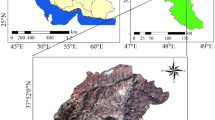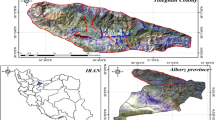Abstract
The sustainable development and supply of land can only be realized through the alternative evaluation of various environmental factors that can affect development projects. Since these environment factors are qualitative in nature, identifying and evaluating subject sites of sustainable land development are difficult. This study sought to provide an environment-friendly evaluation method for land development projects to help both practitioners and decision makers. The alternative evaluation model is developed by using Fuzzy Inference and Analytic Hierarchy Process (AHP) method based on Environmental Evaluation Factors of residential land development project. For developing the model, this study selects Environmental Evaluation Factors through analyzing previous studies, develops a model being composed of the factors and then applies and demonstrates the model to a case. The result shows that two or more land development candidate sites can be evaluated effectively and quantitatively. This approach allows a land development project practitioner and a decision maker to test different alternatives and make the environment-friendliest choice.
Similar content being viewed by others
References
Carr, V. and Tah, J. H. M. (2001). “A fuzzy approach to construction project risk assessment and analysis: Construction project risk management system.” Adv. Eng. Softw., Vol. 32, Nos. 10–11, pp. 847–857.
Chen, Z., Li, H., and Wong, C. T. C. (2005). “Environmental planning: Analytic network process model for environmentally conscious construction planning.” J. Constr. Eng. Manage., Vol. 131, No. 1, pp. 92–101.
CII (Construction Industry Institute) (1986). Evaluation of Design Effectiveness, The Construction Industry Institute, USA.
Hagemeister, M. E., Jones, D. D., and Woldt, W. E. (1996). “Hazard ranking of landfills using fuzzy composite programming.” J. Environ. Eng., Vol. 122, No. 4, pp. 248–258.
Jung, I. S. and Lee, C. S. (2008). “Environmental evaluation factors for site designation of residential land development project in Korea.” Korean J. Architectural Institute(Planning & Design), Vol. 24, No. 8, pp. 301–310.
Jung, I. S. and Lee, C. S. (2009). “Alternative evaluation model in the development of environment-friendly residential land.” Korean J. Constr. Eng. Manage., Vol. 10, No. 1, pp. 156–166.
Klir, G. J. and Folger, T. A. (1988). Fuzzy sets, uncertainty, and information, Englewood Cliffs, New Jersey: Prentice Hall.
Lee, Y. W., Dahab, M. F., and Bogardi, I. (1992). “Nitrate risk management under uncertainty.” J. Water Resour. Plan. Manage., Vol. 118, No. 2, pp. 151–165.
Lee, Y. J., Jeong, S. C., and Lee, H. K. (2003). “Evaluation of safety management for construction injury protection with non-structural fuzzy decision support system.” Theses Collection of AIK, Vol. 23, No. 2, pp. 579–582.
Lee, D. W. and Kim, Y. S. (2003). “A study on the decision making model for construction projects using fuzzy-AHP and fuzzy-delphi.” Korean J. Constr. Eng. Manage., Vol. 4, No. 1, pp. 81–89.
Paek, J. H., Lee, Y. W., and Napier, T. R. (1992). “Selection of design/build proposal using fuzzy-logic system.” J. Constr. Eng. Manage., Vol. 118, No. 2, pp. 303–317.
Saaty, T. L. (1980). The hierarchy process, Mcgraw-Hill, New York, N.Y.
Seo, S. W., Toshiya A., Hwang, Y. W., and Keisuke, H. (2004). “Fuzzy decision-making tool for environmental sustainable buildings.” J. Constr. Eng. Manage., Vol. 130, No. 3, pp. 415–423.
Steele, J. (1997). Sustainable architecture: Principles, paradigms, and case studies, McGraw-Hill, New York, N.Y.
Zadeh, L. A. (1965). “Fuzzy sets.” Inf. Control., Vol. 8, pp. 338–353.
Author information
Authors and Affiliations
Corresponding author
Rights and permissions
About this article
Cite this article
Jung, IS., Lee, CS. Fuzzy inference and AHP-based alternative evaluation tool in the development of sustainable residential land. KSCE J Civ Eng 16, 273–282 (2012). https://doi.org/10.1007/s12205-012-1394-y
Received:
Revised:
Accepted:
Published:
Issue Date:
DOI: https://doi.org/10.1007/s12205-012-1394-y




